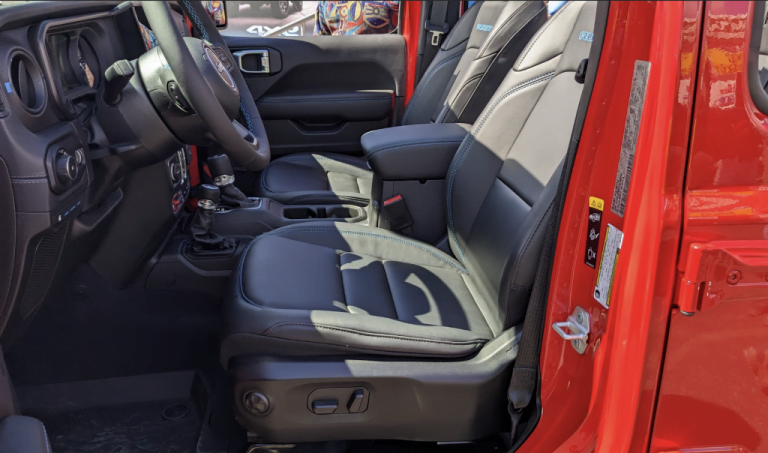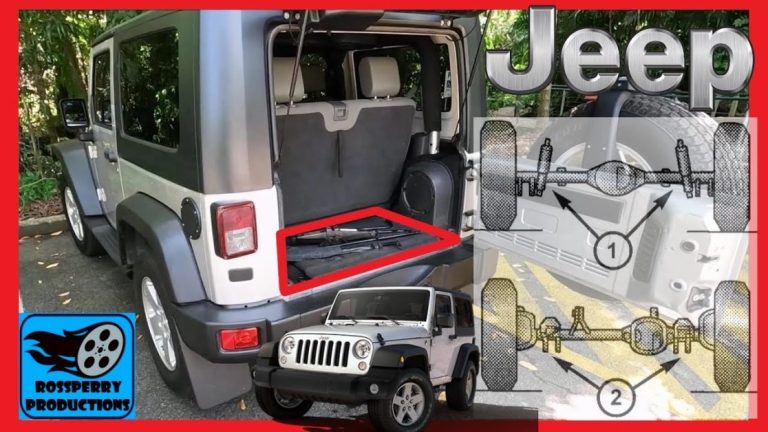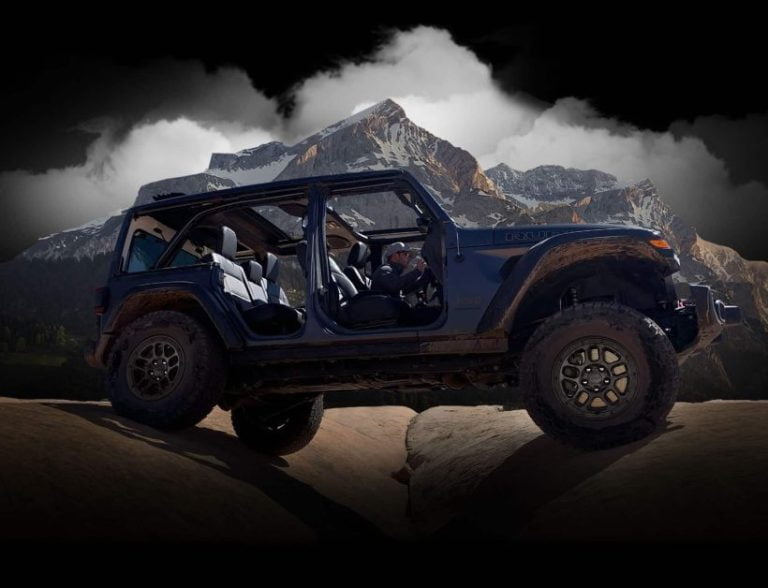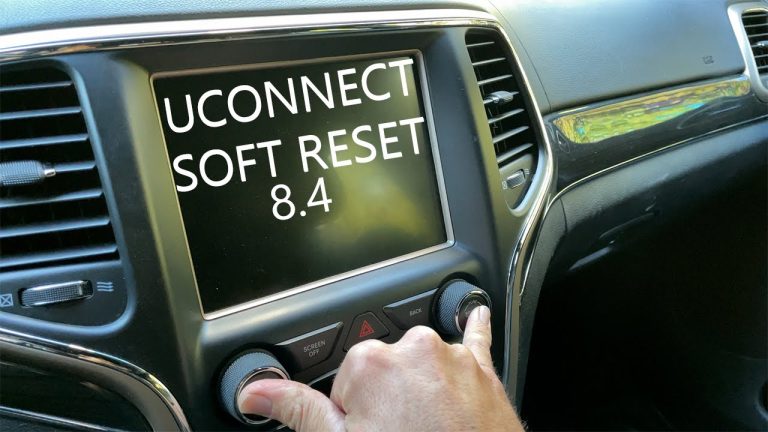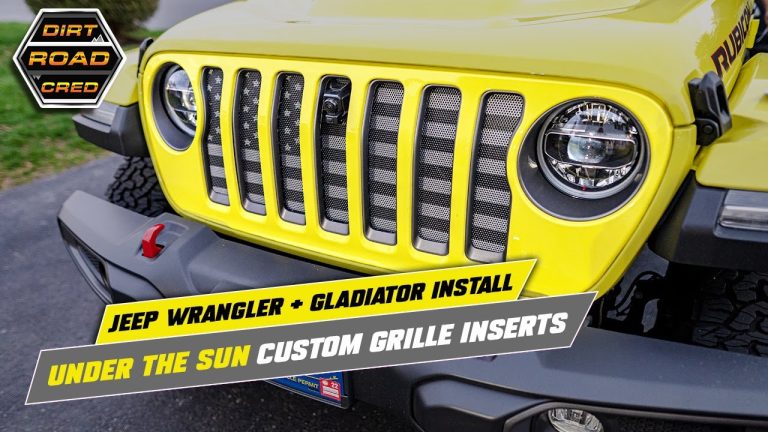How to Fix Death Wobble on Jeep Wrangler: Expert Guide for Smooth Ride
Picture this: You’re cruising down the highway in your beloved Jeep Wrangler, wind in your hair and adventure on your mind.
But suddenly, the steering wheel starts shaking like a leaf in a storm, and panic sets in.
What on earth is happening?
Don’t worry, my friend, you’ve encountered the infamous death wobble.
In this article, we’ll delve into the nitty-gritty of how to fix this dreaded problem and get you back on the road with confidence.
Buckle up, because we’re about to embark on a journey of conquering the death wobble beast.
how to fix death wobble on jeep wrangler
To fix death wobble on a Jeep Wrangler, there are a few steps you can take.
First, it is recommended to seek professional help to properly diagnose and address the issue.
They will inspect the steering components, suspension, and other relevant parts for wear or damage.
If any parts are found to be worn or damaged, they should be replaced.
It is also important to check the alignment and balance of the wheels.
Additionally, upgrading the steering stabilizer and installing a steering damper are common solutions.
Lastly, considering the Jeep’s mileage and prior issues, it may be necessary to replace other steering components such as tie rod ends, drag link, and track bar.
After addressing the death wobble, upgrading the tires to a larger size can be done.
Key Points:
- Seek professional help for a proper diagnosis and resolution
- Inspect steering components, suspension, and other parts for wear or damage
- Replace any worn or damaged parts
- Check alignment and wheel balance
- Upgrade steering stabilizer and install a steering damper
- Replace other steering components if necessary based on mileage and prior issues
Check this out:
💡 Did You Know?
1. Contrary to popular belief, the “death wobble” phenomenon experienced by Jeep Wrangler owners is not exclusive to this model. It can also occur in other vehicles with solid front axles, such as certain trucks and SUVs.
2. The term “death wobble” was coined by Jeep enthusiasts to describe a violent shaking or oscillation that occurs when driving at higher speeds, usually caused by problems in the steering and suspension components.
3. One of the most common causes of death wobble on a Jeep Wrangler is worn-out or damaged track bar bushings. These bushings help stabilize the axle and prevent side-to-side movement, so replacing them can often resolve the issue.
4. While death wobble often occurs after hitting a bump or uneven surface, it can also be triggered by loose or worn-out ball joints, tie rod ends, control arm bushings, or even improper tire balance. Ensuring these parts are regularly inspected and maintained can help prevent death wobble from occurring.
5. Some Jeep owners have found that installing a steering stabilizer or damper can help alleviate the effects of death wobble. While it may not fix the underlying issue, it can provide temporary relief and make the vehicle safer to drive until the root cause is diagnosed and resolved.
Understanding Jeep Death Wobble: Causes And Symptoms
One of the most dreaded issues that Jeep Wrangler owners can encounter is the infamous death wobble. This alarming phenomenon refers to a rapid oscillation in the steering components of a Jeep Wrangler, often making the vehicle feel like it is shaking itself apart. The severity of the wobble can vary, but it often becomes challenging to control the Jeep, and the only way to stop it is by slowing down or coming to a complete stop.
- Death wobble can occur at speeds above 45 mph and is typically triggered by hitting a bump or a pothole on the road.
- It can also happen at speeds below 45 mph, although less frequently.
- Suspension upgrades, such as lift kits, increase the likelihood of experiencing death wobble.
It is important for Jeep Wrangler owners to be aware of death wobble and take necessary precautions to prevent it.
Speed And Conditions: When Does Death Wobble Occur?
Death wobble is a highly unsettling phenomenon that typically occurs when driving over 45 mph in a Jeep Wrangler. This violent shaking of the vehicle can make it extremely difficult to maintain control and can be a terrifying experience for owners. While the exact cause of death wobble is still up for debate among experts, it is generally thought to be primarily connected to problems with the steering and suspension components.
The occurrence of death wobble is often triggered by hitting a bump or pothole at high speeds. This impact can create an imbalance in the front suspension, setting off a rapid oscillation in the steering components and leading to the dreaded death wobble. Addressing this issue promptly is essential for both your own safety and the ongoing performance of your Jeep.
To summarize:
- Death wobble is most commonly encountered when driving above 45 mph in a Jeep Wrangler.
- It is characterized by violent shaking that makes it challenging to maintain control.
- The exact cause of death wobble is a topic of debate among experts, but it is believed to be related to steering and suspension components.
- Hitting a bump or pothole at high speeds can trigger an imbalance in the front suspension, leading to the rapid oscillation responsible for the death wobble.
- It is crucial to address this issue promptly for safety reasons and to ensure the continued performance of your Jeep.
“Death wobble is a terrifying experience for Jeep Wrangler owners, characterized by violent shaking that makes it challenging to maintain control.”
Suspension Upgrades: How They Impact Death Wobble
Suspension upgrades, such as lift kits, are a popular modification for Jeep Wranglers. These upgrades provide better ground clearance, allow for larger tires, and enhance the overall off-road capabilities of the vehicle. However, it is essential to understand that these modifications can also increase the likelihood of experiencing death wobble.
The installation of lift kits and larger tires alters the geometry of the suspension system. This change in geometry can introduce additional stresses and potential imbalances in the front suspension, making the Jeep more susceptible to death wobble. While suspension upgrades offer various benefits, it is crucial to pay close attention to the potential side effects they may have on the vehicle’s handling and stability.
- Lift kits provide better ground clearance
- Larger tires enhance off-road capabilities
- Suspension modifications can increase the likelihood of death wobble
Modifications to the Jeep Wrangler’s suspension system, such as lift kits and larger tires, offer a range of benefits including improved ground clearance and enhanced off-road capabilities. However, it is vital to consider the potential side effect of these modifications on the vehicle’s handling and stability. Altering the suspension geometry can introduce additional stresses and imbalances in the front suspension, potentially leading to the occurrence of death wobble.”
No Model-Specific Risk: Dispelling The Myth
Contrary to popular belief, there is no specific year range or Jeep model more susceptible to death wobble. Jeep Wranglers across different generations can experience this issue, as it is primarily related to the design of the steering and suspension components. It is important not to fall into the misconception that newer models are immune to death wobble, as the potential for its occurrence is present in any Jeep Wrangler.
Understanding that death wobble can affect any Jeep Wrangler is vital. This knowledge empowers owners to take preventative measures, regardless of the age or model of their vehicle. Regular inspections and maintenance can significantly reduce the risk of experiencing death wobble, ensuring a safe and smooth ride.
- Death wobble is not limited to specific year ranges or Jeep models
- It is primarily related to the design of steering and suspension components
- Newer models are not immune to death wobble
- Regular inspections and maintenance can reduce the risk of death wobble
Tips And Suggestions: How To Solve The Problem
If you find yourself facing the dreaded death wobble in your Jeep Wrangler, there are several suggestions and tips you can follow to address this issue effectively.
One of the first steps is to consult a professional. Seeking expert help ensures that the problem is thoroughly diagnosed and properly addressed, minimizing further risks and potential damage to your vehicle.
Inspecting and replacing worn or damaged parts is another crucial step in fixing death wobble. Key components to inspect include:
- The track bar
- Tie rod ends
- Ball joints
- Control arms
- Bushings
Worn or damaged parts should be promptly replaced to restore the proper functioning of the steering and suspension system.
Additionally, it is crucial to ensure that all parts are properly tightened and torqued to specifications during any maintenance or repair work. Failure to do so can lead to premature wear or instability in the front suspension, increasing the likelihood of death wobble.
To summarize the key steps in addressing the Jeep Wrangler death wobble issue:
1. Consult a professional for expert help.
2. Inspect and replace worn or damaged parts such as the track bar, tie rod ends, ball joints, control arms, and bushings.
3. Ensure proper tightening and torque during maintenance or repair work.
Vehicle History: Pre-Existing Issues And Repairs
Understanding the history of your Jeep Wrangler, especially in terms of any pre-existing issues and repairs, can provide valuable insights into the cause of death wobble. In the case of the individual who purchased a 2008 Jeep Wrangler with 179k miles and a new crate engine, it is important to consider the previous maintenance and repairs done on the vehicle.
The fact that the ball joints and steering stabilizer were replaced, and an alignment was performed before the purchase indicates that efforts were made to address any pre-existing issues. However, it is important to note that these repairs may not completely eliminate the possibility of experiencing death wobble, as other worn or damaged components can trigger its occurrence.
Identifying Worn Parts: Logical Order For Replacement
Given the high mileage on the Jeep Wrangler in question, it is reasonable to expect that other steering components may be worn and in need of replacement. When addressing death wobble, it is crucial to follow a logical order for replacing these worn parts.
Starting with a comprehensive inspection of the track bar, tie rod ends, ball joints, control arms, and bushings will help identify the components that require immediate attention. It is recommended to address the most worn or damaged parts first and work your way through the rest of the steering components systematically.
Improvements:
- Use markdown bold to highlight important information
- Address the topic of high mileage on the Jeep Wrangler
- Emphasize the importance of following a logical order for replacing worn parts
- Highlight the need for a comprehensive inspection of multiple steering components
- Suggest addressing the most worn or damaged parts first
Future Plans: Tires And Upgrades After Fixing Death Wobble
After successfully addressing the death wobble issue, it is time to replace the tires on the Jeep Wrangler. Upgrading to a larger size, such as 285/70-17, can provide additional benefits in terms of off-road capabilities and appearance. However, ensuring that the suspension system is properly equipped to handle the larger tires is essential.
Consideration should be given to other potential modifications or upgrades that may impact the overall stability and handling of the vehicle. Consulting with experts and conducting thorough research can help ensure that any future upgrades align with the Jeep Wrangler’s capabilities and minimize the risk of experiencing death wobble.
Understanding the causes and symptoms of death wobble is crucial in addressing the problem effectively. Seeking professional help, inspecting and replacing worn parts, and maintaining the proper balance between suspension upgrades and overall stability are essential steps in fixing death wobble. By following these suggestions and tips, you can enjoy a smooth and safe ride in your Jeep Wrangler.
FAQ
What is the main cause of Jeep death wobble?
The primary cause of Jeep Death Wobble is usually attributed to worn or loose steering and suspension components. These critical parts, such as the track bar, tie rods, and control arms, can become worn over time and lead to instability in the vehicle’s steering. Additionally, the improper inflation of tires can exacerbate the issue, with both over-inflated and under-inflated tires contributing to the occurrence of Death Wobble. It is crucial to regularly inspect and maintain these components to prevent this potentially dangerous phenomenon from occurring.
Can the death wobble be fixed?
While the installation of a steering stabilizer system may provide temporary relief, it is not a definitive solution to fixing the death wobble. To effectively address this issue, it is crucial to focus on maintaining the vehicle in optimal condition. By being a cautious driver and consistently conducting proper maintenance checks, one can minimize the occurrence of the death wobble and ensure a safer driving experience. Ultimately, the key lies in prioritizing vehicle upkeep rather than relying solely on temporary remedies.
Will Jeep fix the death wobble for free?
Yes, Jeep will indeed fix the death wobble for free. Owners of 2018-2020 Jeep Wranglers and 2020 Jeep Gladiators can take advantage of the extended warranty that covers the necessary repair or replacement of suspension components, such as tie rods, ball joints, and control arms, that are linked to the issue. This warranty ensures that owners won’t have to bear the financial burden of rectifying the death wobble themselves, providing them with peace of mind and a solution to the problem at no cost.
Does Jeep cover death wobble?
Under the new eight-year/90,000-mile warranty, Jeep does provide coverage for death wobble. Death wobble is a phenomenon that can occur at highway speeds and is characterized by a violent shaking in the front suspension. This warranty specifically covers replacement parts and labor related to a failed front suspension damper, which is typically the component responsible for death wobble. With this coverage, Jeep owners can have peace of mind knowing that the company stands by their vehicles and will address any issues related to death wobble.

